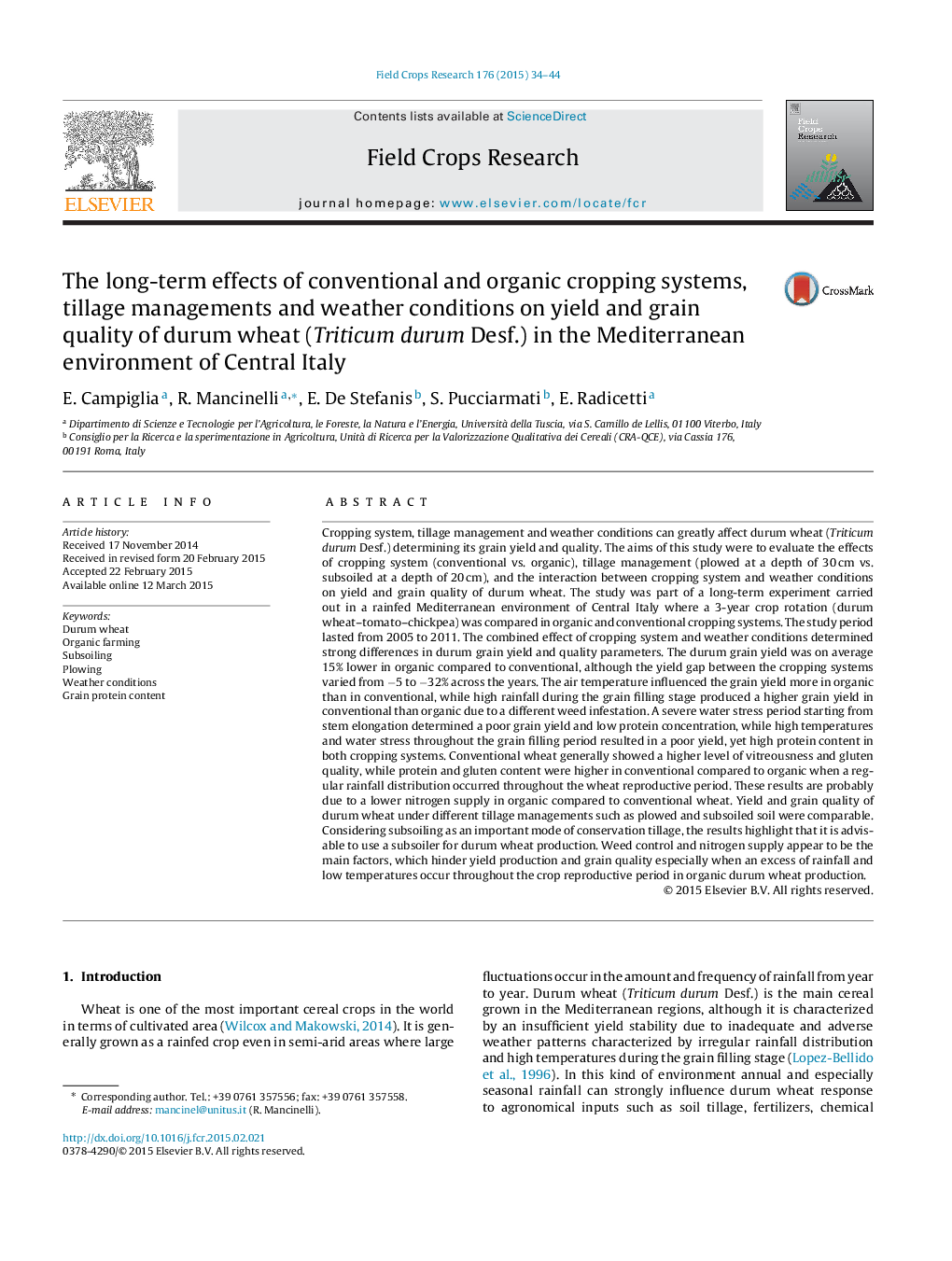| کد مقاله | کد نشریه | سال انتشار | مقاله انگلیسی | نسخه تمام متن |
|---|---|---|---|---|
| 4509904 | 1624687 | 2015 | 11 صفحه PDF | دانلود رایگان |

• Organic and conventional durum wheat were cultivated in plowed and subsoiled soil.
• In the long run conventional wheat had higher grain yield and quality than organic.
• Organic grain yield was positively correlated with high air temperatures in spring.
• Conventional had better grain protein and gluten due to higher nitrogen availability.
• Plowing had a similar effect of subsoiling on wheat grain yield and quality.
Cropping system, tillage management and weather conditions can greatly affect durum wheat (Triticum durum Desf.) determining its grain yield and quality. The aims of this study were to evaluate the effects of cropping system (conventional vs. organic), tillage management (plowed at a depth of 30 cm vs. subsoiled at a depth of 20 cm), and the interaction between cropping system and weather conditions on yield and grain quality of durum wheat. The study was part of a long-term experiment carried out in a rainfed Mediterranean environment of Central Italy where a 3-year crop rotation (durum wheat–tomato–chickpea) was compared in organic and conventional cropping systems. The study period lasted from 2005 to 2011. The combined effect of cropping system and weather conditions determined strong differences in durum grain yield and quality parameters. The durum grain yield was on average 15% lower in organic compared to conventional, although the yield gap between the cropping systems varied from −5 to −32% across the years. The air temperature influenced the grain yield more in organic than in conventional, while high rainfall during the grain filling stage produced a higher grain yield in conventional than organic due to a different weed infestation. A severe water stress period starting from stem elongation determined a poor grain yield and low protein concentration, while high temperatures and water stress throughout the grain filling period resulted in a poor yield, yet high protein content in both cropping systems. Conventional wheat generally showed a higher level of vitreousness and gluten quality, while protein and gluten content were higher in conventional compared to organic when a regular rainfall distribution occurred throughout the wheat reproductive period. These results are probably due to a lower nitrogen supply in organic compared to conventional wheat. Yield and grain quality of durum wheat under different tillage managements such as plowed and subsoiled soil were comparable. Considering subsoiling as an important mode of conservation tillage, the results highlight that it is advisable to use a subsoiler for durum wheat production. Weed control and nitrogen supply appear to be the main factors, which hinder yield production and grain quality especially when an excess of rainfall and low temperatures occur throughout the crop reproductive period in organic durum wheat production.
Journal: Field Crops Research - Volume 176, May 2015, Pages 34–44